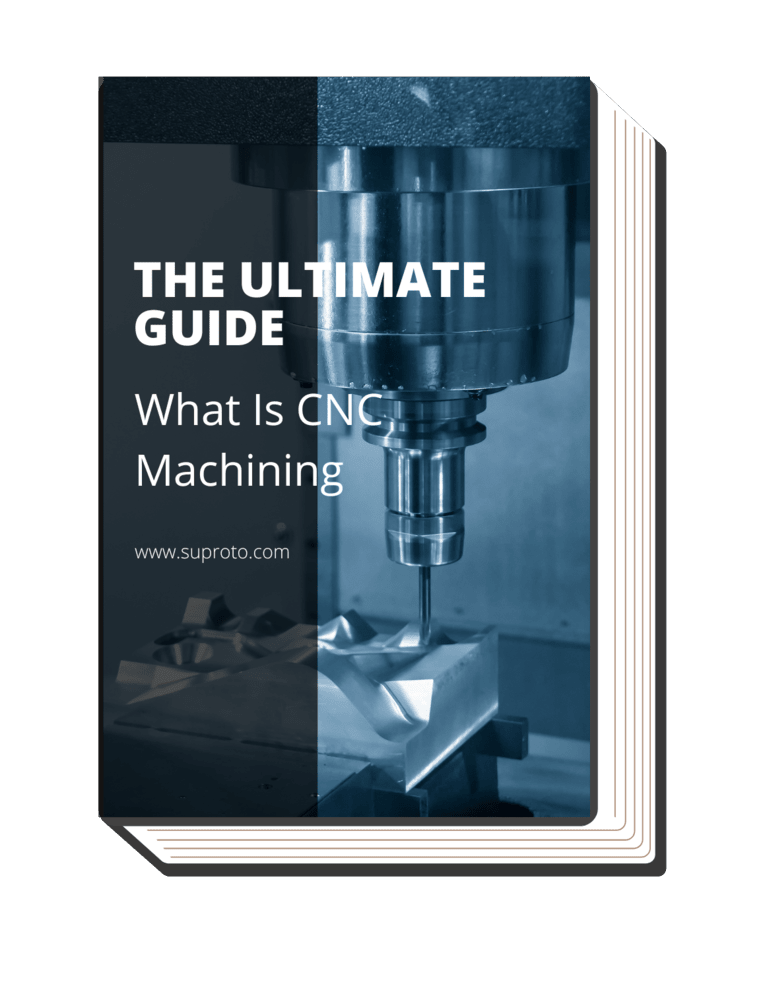Are you wondering how to sculpt a complex piece from a block of material with unparalleled precision and efficiency? With the fast innovation today, machines could do this at an astonishing speed. But, what kind of technology is capable of such feats?
Enter CNC machining – the game changer! CNC Machining is a manufacturing process where computerized controls guide machine tools in meticulously removing layers from a material to craft custom-designed parts. Don’t worry! I will lift the veil for you. In this article, we will go deeper to see how CNC machining leaps in like a superhero to save the day.
Stay tuned and read on!
1. Understanding the Concept: What is CNC Machining?
CNC stands for Computer Numerical Control. It is a subtractive manufacturing process wherein computerized controls and machine tools whisk away layers of material from a stock piece, conjuring a custom-designed part like a magician pulling a rabbit out of a hat. From metals and plastics to wood and composites, the sorcery of CNC routing, CNC milling, and CNC turning is suitable for a plethora of materials and finds applications in the industry. Plastic injection molding services is another remarkable technique used in the industry, allowing for the creation of intricate plastic parts with high precision and efficiency.
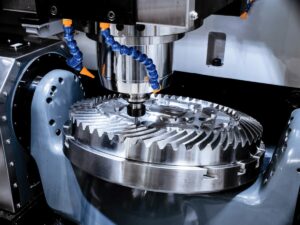
2. How Does CNC Machining Work?
CNC (Computer Numerical Control) machining operates by using computer programming to automate machine tool operations. This process commences with a digital blueprint created in CAD (Computer-Aided Design) software, which is then translated into a set of operational instructions in a language known as G-code.
The CNC machine follows this G-code to precisely maneuver its tools and create a part. This high level of automation allows for exceptional precision, repeatability, and speed in manufacturing, making CNC machining a key technology in many industries. Expertise from CNC milled parts suppliers and metal milling service capabilities amplify outcomes. Materials like aluminum gain tailored precision through aluminum CNC milling service, enhanced by our advanced CNC milling service China. Intricate components find solutions with specialized CNC turned components manufacturers, in line with CNC machining principles.
3. Components of a CNC Machine
Unlock the power within! We’ll dissect the heart and soul of CNC machines by exploring the various components that come together to execute precision manufacturing.
The Controller
The controller, often referred to as the Machine Control Unit (MCU), is an essential component that reads and interprets G-code supplied by an input device, converting it into instructions that can be executed by the machine tools. I believe the MCU is an amalgamation of hardware and software that drives the motions of the machine.
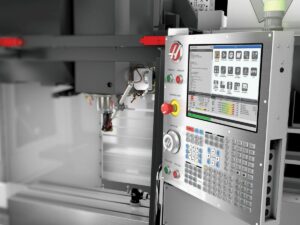
Machine Interface
Moving on, let’s talk about the machine interface, which is an indispensable part of CNC machines. This interface, sometimes referred to as the input device, is the channel through which CNC programs are loaded into the machine. It could be a keyboard for direct G-code input, a USB flash drive for transporting programs, or even wireless communication for downloading programs from a network.
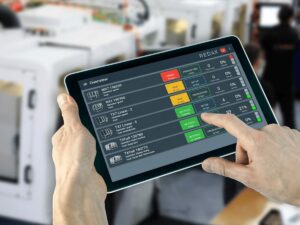
Drive System
Next in line is the drive system, a powerhouse in its own right. In the realm of CNC machines, the drive system comprises motors and other components that move and control the machine axes to execute preprogrammed movements. In essence, this is where rubber meets the road. The driving system is like a muscle, tirelessly carrying out the will of the brain (controller) with precision and power.
Feedback System
Now, let’s turn our attention to the feedback system, the vigilant sentinel of CNC machinery. It’s imperative for a CNC machine to know if the tool is in the right position after a movement is executed. I can tell this is where the feedback system steps in, constantly analyzing and adjusting the cutter’s speed and position.
The Machine Tool
These are the valiant knights in the CNC kingdom, directly performing the tasks on the workpiece. Whether it be lathes using stationary tools with spinning raw materials or mills moving spinning tools into stationary materials, these tools come in many forms and are often housed in “tool libraries”. A tool changer plays a crucial role here, ensuring that the machine tools are ready and in place when called to action.
4. Advantages of CNC Machining
Here, let’s illuminate the game-changing advantages of CNC machining, and why it’s the chosen method for various industries and applications.
Precision and Accuracy
The precision and accuracy of CNC machining, coupled with precision grinding services that fine-tune components to exacting standards, are unrivaled. CNC machining generates minimal to no waste because it is incredibly precise and accurate. This is because the machines receive detailed instructions from a computer, ensuring each cut and movement is carried out with utmost precision. Interestingly, this high level of accuracy is paramount in various industries where there is no room for discrepancies.

Scalability and Reproducibility
In addition to precision, CNC machining is known for its scalability and reproducibility. The use of computer control in CNC machinery allows for consistent results across various materials. From my point of view, CNC machines have a production capacity ideal for creating large quantities of items. This ensures that whether producing a single prototype or thousands of parts, each product will be identical to the last. CNC cutting service further enhances the efficiency of manufacturing processes.
Enhanced Efficiency and Productivity
CNC machines are champions of speed, capable of producing products at a much faster rate compared to traditional methods. I believe they can operate 24 hours a day, leading to increased productivity. This is a huge boon for manufacturers, as it enables them to meet demanding deadlines and optimize production schedules. EDM services, including CNC turning services, play a vital role in achieving such speed and precision. Additionally, CNC punching service contributes to the seamless fabrication of parts, while CNC machining parts service ensures the realization of intricate designs.
The following table compares the enhanced efficiency and productivity of CNC machines, known for their high-speed production and continuous operation, with traditional methods reliant on manual labor and slower production speeds.
| Aspect |
CNC Machines |
Traditional Methods |
| Speed |
Capable of high-speed production, leading to faster product output. |
Typically slower production speed, limited by manual labor. |
| Operation Hours |
Can operate 24 hours a day, maximizing machine utilization and productivity. |
Limited operation hours, dependent on manual labor availability and shifts. |
| Productivity |
Significantly increases productivity due to continuous and automated operation. |
Relies on manual labor, which may have limitations and slower output. |
| Meeting Deadlines |
Enables manufacturers to meet demanding deadlines more effectively. |
Meeting deadlines can be challenging due to slower production speeds. |
| Production Schedules Optimization |
Allows for better optimization of production schedules, resulting in efficient workflow. |
Scheduling may be more complex due to slower production speeds and manual labor availability. |
Reduction of Human Error
One of the standout benefits of CNC machining is the significant reduction of human error. Since CNC machines operate under computer control, they virtually eliminate errors that can occur when humans are involved in the machining process. As a case in point, Suproto has embraced CNC machining to ensure that the components we produce meet stringent quality standards without the risk of human error. Techniques like CNC laser cutting service, wire EDM service, and sinker EDM services further enhance precision and efficiency, epitomizing CNC machining’s capabilities.
5. Types of CNC Machines
Embark on a journey through the diverse landscape of CNC technology. Let’s delve into the myriad types of CNC machines, each offering unique capabilities and benefits for various manufacturing needs. Listed are some to explore:
CNC Mills
These versatile machines, first introduced in 1949, have become indispensable in the manufacturing industry. Primarily, CNC Mills excels in milling, drilling, and cutting operations by interpreting G-code that guides the spindle in different directions. Moreover, the CNC Mill can boast configurations ranging from 3 to 6 axes, thus opening up a realm of possibilities for intricate designs. Find it out at Suproto. For precision beyond imagination, explore Swiss turning services and delve into the world of custom parts machining with us.
CNC Lathes
CNC Lathes are another pivotal player in the CNC machinery lineup. They are specially designed for precisely turning materials during operations. Usually, they have fewer axes compared to CNC Mills, which makes them somewhat more compact. Based on my experience, from creating intricate grooves and threads to facing and parting, the CNC Lathe is a workhorse in the manufacturing sector. For specialized components like shafts, consult a reliable shaft manufacturer to fulfill your unique needs.
CNC Routers
Often mistaken for CNC Mills, CNC Routers are specifically engineered for machining softer materials like wood, plastics, and even some soft metals. They excel in design and shaping materials. The global CNC Router market size is estimated to be worth USD 673.3 million in 2021 and is forecast to a readjusted size of USD 865 million by 2028 with a CAGR of 3.6 percent during the forecast period 2022-2028. Encompassing diverse production, explore the realm of custom machined enclosure and the precision of HDPE CNC machining service for a variety of materials.
CNC Plasma Cutters
Moving forward, CNC Plasma Cutters are a cutting-edge addition to the CNC family. As the name implies, these machines employ plasma cutting technology to cut through electrically conductive materials. With the combination of high-speed plasma and precision control of CNC, these machines can cut through metals like a hot knife through butter. Combine CNC technology with the efficiency of plasma cutting through CNC plasma cutting services.
CNC Grinders
CNC Grinders are the guardians of precision in the manufacturing world. These machines are designed for an array of grinding tasks including sharpening and shaping tools, and grinding profiles and molds. By automating grinding processes, CNC Grinders deliver unparalleled accuracy and repeatability, which are critical in high-precision applications such as aerospace components and surgical equipment.
3D Printers
3D Printers – the revolutionizers. These machines are the embodiments of additive manufacturing as they create objects by depositing materials layer by layer. From prototyping to final production, 3D printers are changing the way of manufacture. I can vouch that with ever-evolving technology, 3D printers are opening new avenues in industries as diverse as healthcare, automotive, and consumer products. Experience the innovative world of manufacturing with advanced techniques like China CNC prototyping and explore the boundaries of precision machining.
6. Materials Compatible with CNC Machining
Matching prowess with material! This unearths the treasure trove of materials that are compatible with CNC machining and how they empower industries to create products of the highest quality. See the ff below:
Metals
Metals are an integral part of the CNC machining spectrum. Metals are easily the most commonly used materials in CNC machining, and machines can handle a variety of metals from brass to nickel superalloys like Inconel. The wide gamut of applications includes everything from injection molds to crafting intricate gears and shafts. Looking to extend your material options? Consider exploring our Stainless Steel 3D Printing Service, 3D Aluminum Printing Service, and specialized Inconel 3D Printing Service to achieve remarkable results.
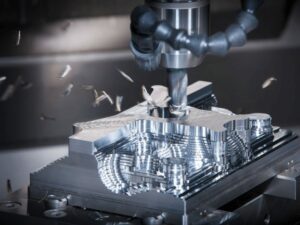
Plastics
Plastics, these too are indispensable in CNC machining. While most plastic parts are created through injection molding, CNC machining is a reliable alternative for producing specific components, such as valve bodies and bushings, often made from ABS, nylon, and polycarbonate. I see this, particularly when it comes to producing prototypes for testing functions before investing in molding tools, CNC machining proves its worth. Wondering about the cost of 3D printing plastic or curious about Nylon 3D Printing Service? We’ve got you covered.
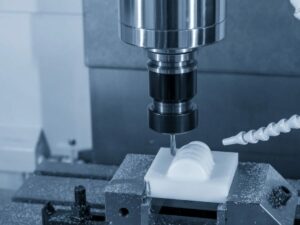
Composites
Moreover, composites present another exciting avenue for CNC machines. CNC machines are frequently used in the processing of composite materials, which can range from aramid to fiberglass and carbon fiber. Aerospace and marine industries especially benefit from CNC machining of composites, which allows for the creation of components with complex geometries, contributing to lightweight and high-performance designs.
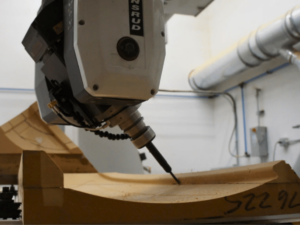
Wood and Foam
CNC routers are widely utilized for cutting wood and are typically more cost-effective compared to metal-cutting CNC machines. I believe the applications encompass stylish furniture, ornate window frames, and decorative panels. As for foam, CNC routers adeptly shape foam blocks into snug packaging, often used to secure high-value products during transportation.
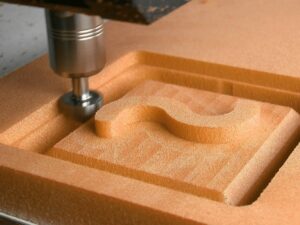
7. Understanding the CNC Machining Process
Understanding the CNC Machining Process delves into the intricate world of Computer Numerical Control (CNC) machining, which I think is very essential to know. So, here are the 5 processes to explore:
Step#1 Conceptual Design and CAD Modeling
Starting with conceptual design and CAD modeling, this stage is the creative cradle of CNC machining. It involves creating a detailed 3D model of the part or product to be manufactured. Precision at this stage is crucial, as it directly influences the efficacy of the final product.
Step#2 Conversion to CNC Program
Next, the transition to the conversion phase is instrumental. The 3D model is translated into a CNC program, which effectively serves as the instruction manual for the CNC machine. Here, for example, the technical acumen is essential to ensure that the programming accurately reflects the design.
Step#3 Setting up the Machine
Furthermore, setting up the machine is a critical step. This includes configuring the tools, selecting the appropriate cutting parameters, and, if seeking top-notch performance, opting for a leading manufacturer like Suproto. We offer an exceptional range of CNC machines that are synonymous with precision and reliability.
Step#4 Execution of the CNC Program
Once everything is set, the execution of the CNC program commences. The machine follows the program’s instructions to create the component. Speaking from experience, the machine’s agility and precision at this stage are pivotal in ensuring the produced part is true to the design.
Step#5 Post-processing and Quality Check
Post-processing and quality checks mark the culmination of the CNC machining process. This involves any finishing touches such as polishing or painting and ensuring that the component meets the required specifications and quality standards. For me, this final assessment ensures the produced component’s integrity and compliance with the design specifications. Additionally, if you’re interested in extending your manufacturing capabilities, explore the exceptional 3D Printing Service in China that we offer.
8. Industries and Applications of CNC Machining
CNC machining – the unsung hero of countless industries! Let’s unveil the vast array of industries and applications that are soaring to new heights through the power of CNC machining. Refer to the information below:
Aerospace and Defense
In the riveting world of aerospace and defense, CNC machining takes flight, literally! As one of the primary manufacturing processes, CNC machining is invaluable in producing high-precision components that are crucial to the functionality and safety of aircraft and spacecraft. This precision-driven approach resonates with the principles of plastic injection molding service China, ensuring that every component meets the exact specifications required. Moreover, the intricate designs of aerospace parts find their counterparts in the precision-driven sheet metal bending process and the finesse of sheet metal laser cutting service.
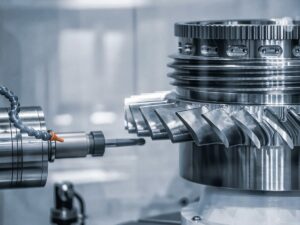
Automotive
Here, CNC machining accelerates the production of parts ranging from the basics, like screws to high-performance engine components. The automotive sector has a constant throttle on innovation and improvement, and CNC machining proves to be a turbocharged ally. In parallel, plastic injection moulding companies in the UK contribute to the automotive industry by providing efficient solutions for producing plastic components integral to modern vehicles. What is an injection mold? It’s a key component in this process that ensures consistent and accurate production of plastic parts.
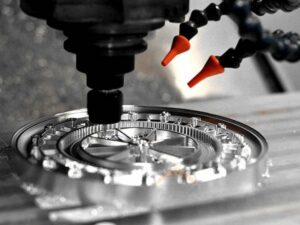
Medical
Venturing into the realm of medical applications, CNC machining performs surgical strikes of precision. In this critical industry, there is no margin for error. I have to say that, life-saving devices and implants must be produced with utmost accuracy and conform to stringent regulatory standards.
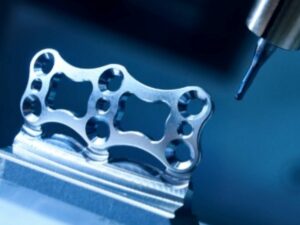
Manufacturing and Prototyping
In the burgeoning world of manufacturing and prototyping, CNC machining is the master craftsman. When companies need to bring a concept to life, for example, be it a new widget or an innovative piece of technology, CNC machining is there to transform ideas into tangible prototypes. This iterative process aligns with the principles of CNC machining and plastic injection molding, where designs can be refined and prototyped before final production, ensuring optimal functionality and quality.
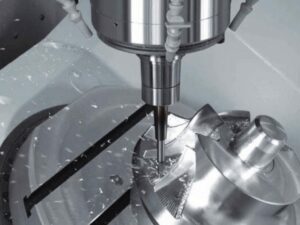
Arts and Sculpture
Last but not least, let’s carve out some time for the arts and sculpture domain. In this creative arena, CNC machining dances gracefully. From the intricate carvings in a piece of wood to the majestic curves of a metal sculpture, CNC machining breathes life into the materials. I see some artists use CNC machining as a tool to transcend the constraints of manual work and materialize their visions into works of art.
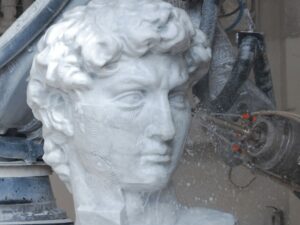
Conclusion
As we have explored the realm of CNC machining and how it operates, we discover the intricacies of technology and processes that enable precision manufacturing. Whether new or seasoned in the business, it’s important to know how CNC machining can improve production efficiency and product quality.
With the majority of today’s businesses being tech-savvy and actively searching for services online, it’s vital to be informed about the latest advancements in CNC technology. Don’t hesitate to contact us for any queries or information on how we help in business. Let’s collaborate and unlock new opportunities together.













